Anthony Bourdain in The New Yorker:
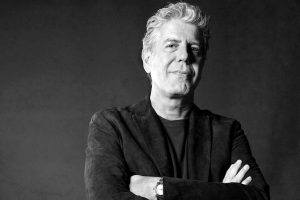 Good food, good eating, is all about blood and organs, cruelty and decay. It’s about sodium-loaded pork fat, stinky triple-cream cheeses, the tender thymus glands and distended livers of young animals. It’s about danger—risking the dark, bacterial forces of beef, chicken, cheese, and shellfish. Your first two hundred and seven Wellfleet oysters may transport you to a state of rapture, but your two hundred and eighth may send you to bed with the sweats, chills, and vomits.
Good food, good eating, is all about blood and organs, cruelty and decay. It’s about sodium-loaded pork fat, stinky triple-cream cheeses, the tender thymus glands and distended livers of young animals. It’s about danger—risking the dark, bacterial forces of beef, chicken, cheese, and shellfish. Your first two hundred and seven Wellfleet oysters may transport you to a state of rapture, but your two hundred and eighth may send you to bed with the sweats, chills, and vomits.
Gastronomy is the science of pain. Professional cooks belong to a secret society whose ancient rituals derive from the principles of stoicism in the face of humiliation, injury, fatigue, and the threat of illness. The members of a tight, well-greased kitchen staff are a lot like a submarine crew. Confined for most of their waking hours in hot, airless spaces, and ruled by despotic leaders, they often acquire the characteristics of the poor saps who were press-ganged into the royal navies of Napoleonic times—superstition, a contempt for outsiders, and a loyalty to no flag but their own.
A good deal has changed since Orwell’s memoir of the months he spent as a dishwasher in “Down and Out in Paris and London.” Gas ranges and exhaust fans have gone a long way toward increasing the life span of the working culinarian. Nowadays, most aspiring cooks come into the business because they want to: they have chosen this life, studied for it. Today’s top chefs are like star athletes. They bounce from kitchen to kitchen—free agents in search of more money, more acclaim.
More here.

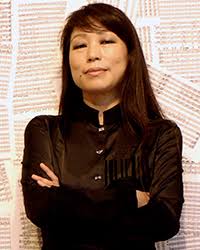 They are highly virtuosic pieces, which, I assume, must not be played slowly, because then you would hear and see nothing, just as when you walk too slowly past a fence, you perceive the flashes of life from behind it not as a cohesive picture, but rather only as disparate snapshots. The first etude, “In C,” is indeed, as the title reveals, built around this fundamental note. It conveys a mysteriously contemplative and at the same time very harmonious impression. In several slow breaths, flickering structures are built up repeatedly to towering heights. In the second part, nested rhythms become so dense that they generate the gingerbread men feeling. The etude is heading for a climax, but then no explosive outburst occurs; instead, individual melodic lines break free in a high register and simply waft away.
They are highly virtuosic pieces, which, I assume, must not be played slowly, because then you would hear and see nothing, just as when you walk too slowly past a fence, you perceive the flashes of life from behind it not as a cohesive picture, but rather only as disparate snapshots. The first etude, “In C,” is indeed, as the title reveals, built around this fundamental note. It conveys a mysteriously contemplative and at the same time very harmonious impression. In several slow breaths, flickering structures are built up repeatedly to towering heights. In the second part, nested rhythms become so dense that they generate the gingerbread men feeling. The etude is heading for a climax, but then no explosive outburst occurs; instead, individual melodic lines break free in a high register and simply waft away.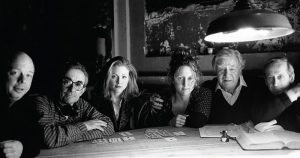 For much of the 1980s, André Gregory rehearsed Chekhov nearby in another boarded up Broadway jewel, the ruined Victory
For much of the 1980s, André Gregory rehearsed Chekhov nearby in another boarded up Broadway jewel, the ruined Victory 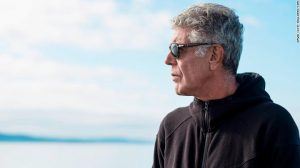
 But Podemos
But Podemos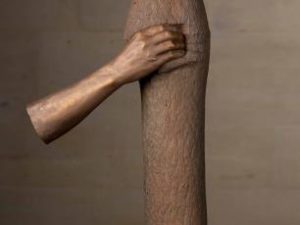 The use of local produce is something you might think it more likely to find advertised in a gallery’s café, than at the opening of the exhibition itself. At the Yorkshire Sculpture Park’s retrospective of the works of the Italian sculptor Giuseppe Penone, however, a credit tells you that the potatoes for one of the exhibts were supplied by W. Moore and Son and Bradshaw Wholesale Ltd.
The use of local produce is something you might think it more likely to find advertised in a gallery’s café, than at the opening of the exhibition itself. At the Yorkshire Sculpture Park’s retrospective of the works of the Italian sculptor Giuseppe Penone, however, a credit tells you that the potatoes for one of the exhibts were supplied by W. Moore and Son and Bradshaw Wholesale Ltd. Every two years, a few dozen nations deputize a small circle of curators and thinkers to represent them at the show; many of the participating countries are regulars, with permanent pavilions of their own, often dating back to the early 20th century, and located in the leafy Giardini della Biennale near Venice’s easternmost tip. But each edition of the exhibition also brings a batch of wildcards, never-before-seen entrants whose homelands have decided, for whatever reason, to throw their hats into the ring. This year, first-timers included Guatemala, Saudi Arabia, and Lebanon. And social media (full disclosure: mine included) took a special shine to the premier outing from the Vatican, a brace of inventive freestanding chapels by architects both well- and lesser-known. There was one rookie nation, however, whose appearance at the Biennale was especially poignant, both for the character of its installation and for the mere fact of its being in Venice at all: Pakistan.
Every two years, a few dozen nations deputize a small circle of curators and thinkers to represent them at the show; many of the participating countries are regulars, with permanent pavilions of their own, often dating back to the early 20th century, and located in the leafy Giardini della Biennale near Venice’s easternmost tip. But each edition of the exhibition also brings a batch of wildcards, never-before-seen entrants whose homelands have decided, for whatever reason, to throw their hats into the ring. This year, first-timers included Guatemala, Saudi Arabia, and Lebanon. And social media (full disclosure: mine included) took a special shine to the premier outing from the Vatican, a brace of inventive freestanding chapels by architects both well- and lesser-known. There was one rookie nation, however, whose appearance at the Biennale was especially poignant, both for the character of its installation and for the mere fact of its being in Venice at all: Pakistan. Kamila Shamsie’s Home Fire, which reworks Sophocles’ tragedy Antigone to tell the story of a British Muslim family’s connection to Islamic State, has won the Women’s prize for fiction, acclaimed by judges as “the story of our times”.
Kamila Shamsie’s Home Fire, which reworks Sophocles’ tragedy Antigone to tell the story of a British Muslim family’s connection to Islamic State, has won the Women’s prize for fiction, acclaimed by judges as “the story of our times”. I’ve been a psychology professor since 2012. In the past six years, I’ve witnessed students of all ages procrastinate on papers, skip presentation days, miss assignments, and let due dates fly by. I’ve seen promising prospective grad students fail to get applications in on time; I’ve watched PhD candidates take months or years revising a single dissertation draft; I once had a student who enrolled in the same class of mine two semesters in a row, and never turned in anything either time.
I’ve been a psychology professor since 2012. In the past six years, I’ve witnessed students of all ages procrastinate on papers, skip presentation days, miss assignments, and let due dates fly by. I’ve seen promising prospective grad students fail to get applications in on time; I’ve watched PhD candidates take months or years revising a single dissertation draft; I once had a student who enrolled in the same class of mine two semesters in a row, and never turned in anything either time.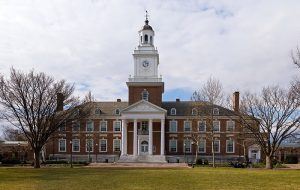 The cost of college is a notoriously complex subject. The list price at many private colleges, including tuition, fees, room and board, has reached the bewildering sum of $70,000 a year. But the real price, taking into account financial aid, is often vastly lower.
The cost of college is a notoriously complex subject. The list price at many private colleges, including tuition, fees, room and board, has reached the bewildering sum of $70,000 a year. But the real price, taking into account financial aid, is often vastly lower.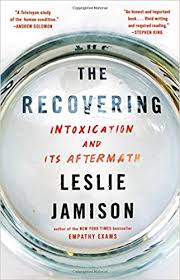 A
A 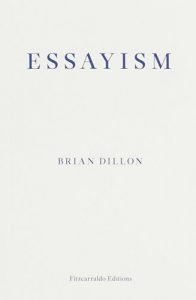 What is Essayism? Its writer admits to us that he has ‘no clue how to write about the essay as a stable entity or established class, how to trace its history diligently from uncertain origins through successive phases of literary dominance’ – and praise be for that. The book is instead a series of attempts, of essays, of course, at delineating or describing the form. Each chapter is a few pages, beginning with an idea: ‘On essays and essayists’, ‘On origins’, ‘On lists’, and as the book begins to become something else, ‘On consolation’. The book is also a story of the book being written, and of Dillon going under entirely. ‘Each day I sat at my desk in an office at the end of the garden,’ he tells us, early on, ‘and cried and smoked and tried to write – tried to write this book – and each day finally gave myself up to fantasies of suicide. I would walk out of this suburb along country lanes to a secluded stretch of railway line and lay my head on the track in the moonlight.’
What is Essayism? Its writer admits to us that he has ‘no clue how to write about the essay as a stable entity or established class, how to trace its history diligently from uncertain origins through successive phases of literary dominance’ – and praise be for that. The book is instead a series of attempts, of essays, of course, at delineating or describing the form. Each chapter is a few pages, beginning with an idea: ‘On essays and essayists’, ‘On origins’, ‘On lists’, and as the book begins to become something else, ‘On consolation’. The book is also a story of the book being written, and of Dillon going under entirely. ‘Each day I sat at my desk in an office at the end of the garden,’ he tells us, early on, ‘and cried and smoked and tried to write – tried to write this book – and each day finally gave myself up to fantasies of suicide. I would walk out of this suburb along country lanes to a secluded stretch of railway line and lay my head on the track in the moonlight.’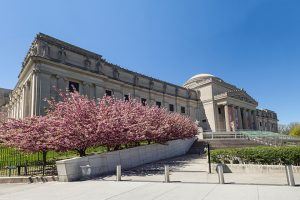 The questioning of long-held beliefs and understanding of the full histories behind institutions should have positive repercussions for everyone. But as the Brooklyn, Liverpool and Birmingham cases highlight, decolonizing cultural institutions is not straightforward. Their attempts suggest that the key issue at this early stage is a lack of understanding about what decolonizing an institution means, and what it entails. A genuinely decolonial approach would see museums interrogate their positions as apparently objective caretakers of non-Western objects and artefacts. The assumption of Western objectivity is not only divorced from the material conditions in which those objects have come to be “owned” by Western knowledge – knowledge informed by a history of contact on unequal terms – but it also instantiates the exceptionalism with which Western cultures have felt entitled to the final, objective say on other cultures. By acknowledging this, and then pursuing new roles and missions, institutions could take a number of concrete steps, such as repatriating objects where feasible, especially if they were plundered from peoples for whom they sustain cultural value; embracing greater accountability towards their local communities; and consider the colonial and racial legacies informing their operations and governance.
The questioning of long-held beliefs and understanding of the full histories behind institutions should have positive repercussions for everyone. But as the Brooklyn, Liverpool and Birmingham cases highlight, decolonizing cultural institutions is not straightforward. Their attempts suggest that the key issue at this early stage is a lack of understanding about what decolonizing an institution means, and what it entails. A genuinely decolonial approach would see museums interrogate their positions as apparently objective caretakers of non-Western objects and artefacts. The assumption of Western objectivity is not only divorced from the material conditions in which those objects have come to be “owned” by Western knowledge – knowledge informed by a history of contact on unequal terms – but it also instantiates the exceptionalism with which Western cultures have felt entitled to the final, objective say on other cultures. By acknowledging this, and then pursuing new roles and missions, institutions could take a number of concrete steps, such as repatriating objects where feasible, especially if they were plundered from peoples for whom they sustain cultural value; embracing greater accountability towards their local communities; and consider the colonial and racial legacies informing their operations and governance.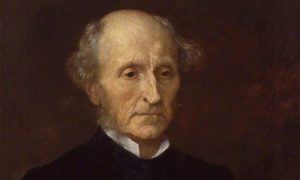 In 1826, at the age of 20, John Stuart Mill sank into a suicidal depression, which was bitterly ironic, because his entire upbringing was governed by the maximisation of happiness. How this philosopher clambered out of the despair generated by an arch-rational philosophy can teach us an important lesson about suffering. Inspired by Jeremy Bentham’s ideals, James Mill’s rigorous tutelage of his son involved useful subjects subordinated to the utilitarian goal of bringing about the greatest good for the greatest number. Music played a small part in the curriculum, as it was sufficiently mathematical – an early ‘Mozart for brain development’. Otherwise, subjects useless to material improvement were excluded. When J S Mill applied to Cambridge at the age of 15, he’d so mastered law, history, philosophy, economics, science and mathematics that they turned him away because their professors didn’t have anything more to teach him.
In 1826, at the age of 20, John Stuart Mill sank into a suicidal depression, which was bitterly ironic, because his entire upbringing was governed by the maximisation of happiness. How this philosopher clambered out of the despair generated by an arch-rational philosophy can teach us an important lesson about suffering. Inspired by Jeremy Bentham’s ideals, James Mill’s rigorous tutelage of his son involved useful subjects subordinated to the utilitarian goal of bringing about the greatest good for the greatest number. Music played a small part in the curriculum, as it was sufficiently mathematical – an early ‘Mozart for brain development’. Otherwise, subjects useless to material improvement were excluded. When J S Mill applied to Cambridge at the age of 15, he’d so mastered law, history, philosophy, economics, science and mathematics that they turned him away because their professors didn’t have anything more to teach him. Like most other neurological disorders, Huntington’s disease has proved to be a costly and frustrating target for drug developers. But it also has distinctive features that make it a good match for treatments that target genes. It arises from a mutation in a single gene that encodes the protein huntingtin, and a disease-causing copy of the gene can be readily distinguished from a normal copy by the presence of an
Like most other neurological disorders, Huntington’s disease has proved to be a costly and frustrating target for drug developers. But it also has distinctive features that make it a good match for treatments that target genes. It arises from a mutation in a single gene that encodes the protein huntingtin, and a disease-causing copy of the gene can be readily distinguished from a normal copy by the presence of an  People are gullible. Humans can be duped by liars and conned by frauds; manipulated by rhetoric and beguiled by self-regard; browbeaten, cajoled, seduced, intimidated, flattered, wheedled, inveigled, and ensnared. In this respect, humans are unique in the animal kingdom.
People are gullible. Humans can be duped by liars and conned by frauds; manipulated by rhetoric and beguiled by self-regard; browbeaten, cajoled, seduced, intimidated, flattered, wheedled, inveigled, and ensnared. In this respect, humans are unique in the animal kingdom. By weight, human beings are insignificant.
By weight, human beings are insignificant.